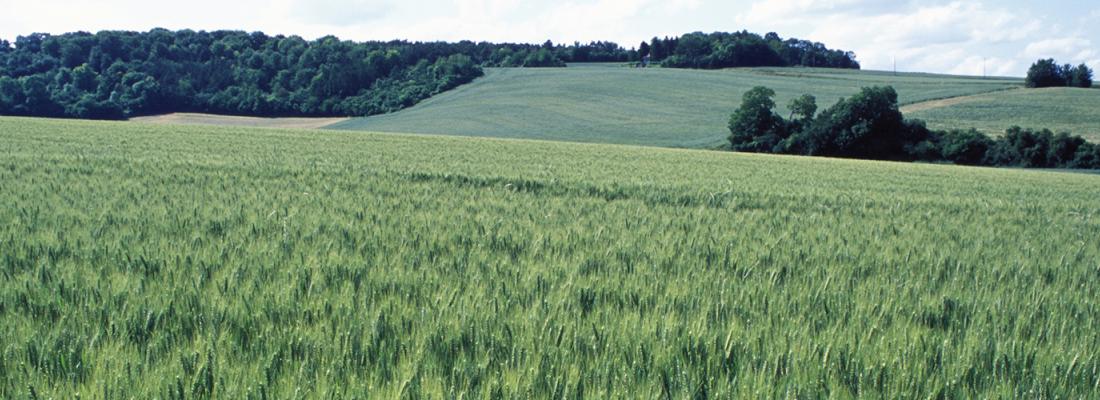Climate change and risks Reading time 3 min
A clearer understanding of the impact of extreme climate events on wheat yields
Published on 24 April 2018

The leading bread wheat producer in the European Union, France has been the setting for extreme climatic events in recent years. Heatwaves or cold snaps, excessive rainfall or drought, they all have important effects on crop yields. Thus in 2016, and quite unexpectedly, the production of bread wheat proved disastrous, with yield losses ranging from 20% to 50% in the principal French production region. Such serious losses had never been seen during the previous 60 years, so it was necessary to understand their causes. For this purpose, scientists from INRA, CNRS and CEA explored the links between climatic conditions and wheat yields over time. This wide-ranging analysis produced results that allowed them to better understand the conditions that are likely to lead to exceptional losses.
Unprecedented climate conditions associated with record yield losses
Extremely high temperatures in late autumn (with maxima close to 11°C in December 2015); excessive rainfall (4.4 mm/day in May 2016), abnormally low levels of solar radiation and evapotranspiration in the spring: those were the exceptional climatic conditions which prevailed in 2015-16. Harmful to the development of wheat but favourable to that of fungal diseases, these singular conditions – which had never been observed since 1958 according to some experts – coincided with exceptional yield losses. When analysing the impact of such climatic extremes on wheat production between 1958 and 2016, the scientists demonstrated that excessive spring rainfall was even more harmful to crop yields if temperatures the previous autumn had been abnormally high. Thus, if the number of days in autumn at between 0° and 10° were halved (falling from 20 to 10), and if rainfall markedly higher than average occurred the next spring, the probability of severe yield loses (i.e. more than 10%) would be doubled, to reach 50%.
What 2016 might indicate for the future
In the context of climate projections, scientists are anticipating a rise in autumn temperatures between now and 2050, and this evolution could make the very mild temperatures seen in December 2015 much less rare in the future in the main French bread wheat production region. On the other hand, no clear trends emerged with respect to spring rainfall between April and July. This work underlines the importance of combining the analysis of both climate observations and levels of agricultural production. It highlights a new type of climate impact which as well as triggering new areas of research poses the question of the vulnerability of current and future production systems in the face of climatic extremes.
|
The core of the study The scientists worked on agronomic and climatic data at the scale of the principal French wheat production region, which includes 27 Departments in the Bourgogne-Franche-Comté, Centre-Val de Loire, Grand Est, Hauts-de-France, Île-de-France, Normandie, Nouvelle-Aquitaine and Pays de la Loire regions. |
* INRA-AgroParisTech Joint Research Unit for Agronomy, the CNRS-CEA-UVSQ Laboratoire des Sciences de l’Environnement et du Climat and the CNRS/Cerfacs Laboratoire Climat, Environnement, Couplages et Incertitudes were all involved in this work, which was carried out in the context of the CLand Convergence Institute: https://cland.lsce.ipsl.fr/.
|
Publication Causes and implications of the unforeseen 2016 extreme yield loss in the breadbasket of France. |
